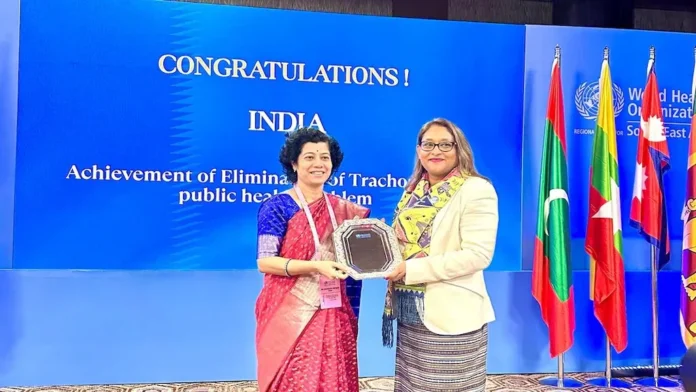New Delhi, Oct 9: India has successfully eliminated trachoma as a public health problem, making it the third nation in the WHO South-East Asia region to achieve this distinction. The certification was handed over by WHO South-East Asia Regional Director Saima Wazed to Aradhana Patnaik, Additional Secretary and Mission Director of the National Health Mission, during the WHO South-East Asia Regional Committee meeting in New Delhi.
Trachoma, a contagious bacterial eye infection caused by Chlamydia trachomatis, was once a leading cause of blindness in India, especially in disadvantaged communities living in poor conditions. If untreated, the infection can cause permanent blindness. Globally, around 150 million people suffer from trachoma, with 6 million at risk of severe vision problems or blindness.
India’s efforts to combat trachoma began in 1963 with the launch of the National Trachoma Control Program, later integrated into the National Program for Control of Blindness (NPCB). In 1971, trachoma was responsible for 5% of blindness cases, but sustained initiatives under the National Programme for Control of Blindness & Visual Impairment (NPCBVI) reduced this figure to less than 1%.
India’s success was largely due to the implementation of WHO’s SAFE strategy, focusing on surgery, antibiotics, facial hygiene, and environmental improvements. By 2017, the country had declared itself free from active trachoma, but continued monitoring through the National Trachomatous Trichiasis (TT only) Survey, conducted in 200 endemic districts from 2021 to 2024, ensured further progress.
Following a rigorous review of the survey results, WHO granted India official certification for eliminating trachoma.

